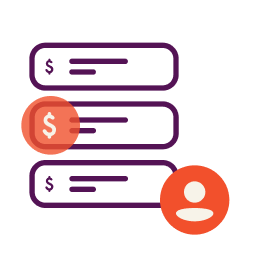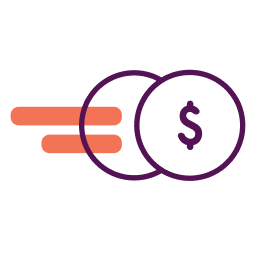This story was updated December 23, 2024 to reflect the latest Federal Reserve rate increase.
The Federal Reserve lowered interest rates in 2024, and small business owners may see lower borrowing costs as a result. Here’s what you can do.
The Federal Reserve announced on December 18, 2024 that it lowered a key interest rate again by .25 percentage points, moving the target range for the federal funds rate to between 4.25 and 4.5%. The federal funds rate is a benchmark interest rate that often affects other interest rates such as the prime rate. As a result, the prime rate is now 7.5%. Both consumers and small business borrowers will benefit from lower rates.
Here’s how the Fed rate hike may impact small business owners, and steps to take to help your business weather rising rates.
Why Has the Federal Reserve Lowered Interest Rates?
Interest rates hovered around 0% around the pandemic, and the Fed had been hesitant to raise rates while the U.S. economy was still dealing with the effects of the coronavirus pandemic. However, after the pandemic, the Fed began to raise interest rates in an effort to slow inflation.
The Impact of Fed Interest Rates on Small Businesses
Small business borrowing (aside from COVID relief loans) has recently begun to recover from pandemic lows with banks and other lenders reporting increasing demand.
Business owners searching for financing in the next few months will notice higher rates. Since business loans often involve larger loan amounts, they are likely to notice the effect of higher rates more quickly than consumers who have loans with smaller balances.
Business owners with outstanding loans may see rates rise, depending on the types of loans they carry. Here’s how it will impact some of the post popular types of business financing:
Lines of credit: Variable interest rates are common on lines of credit, which means the rates businesses pay on this popular form of small business financing are likely to increase. This initial rate hike should have a minimal impact for borrowers with modest balances, but for those with large balances this and subsequent rate hikes may lead to noticeable increases in payments.
Business credit cards: Most credit cards carry variable rates tied to the prime rate, which in turn is impacted by the federal funds rate. That means rates will rise for the vast majority of business owners with credit cards. These initial rate hikes are relatively small, and minimum payments for business owners aren’t likely to be significantly impacted. However, some businesses carry significant credit card debt. And with rates likely to increase again, costs will go up. In addition, those relying on 0% balance transfers or introductory offers may find the rate after that offer expires is higher than anticipated.
Of course, business owners are consumers too, and may find their personal pocketbooks squeezed as their consumer credit card rates rise, or if they are shopping for mortgages or car loans.
How Much Are Rates Expected to Decrease in 2025?
The Fed has indicated there will be fewer interest rate cuts in 2025. Future interest rate cuts will depend on many different factors including the direction of the economy under the new Presidential administration. As the Fed notes in its Federal Open Markets Committee notes, “In considering the extent and timing of additional adjustments to the target range for the federal funds rate, the Committee will carefully assess incoming data, the evolving outlook, and the balance of risks.”
How Small Businesses Can Benefit from Lower Interest Rates
There are several ways business owners can benefit from lower interest rates:
- Consider variable-rate financing. Loans with variable rates, such as lines of credit or business credit cards, will usually carry lower rates when rates go down. Of course, there’s no guarantee rates won’t rise in response to economic conditions, and when those rates change, a variable-rate account likely will as well.
- Deal with credit card debt. Pay down high-rate credit card debt if possible, or refinance it with a low-rate credit card balance transfer or even a term loan. Consider shopping for a low-rate credit card or a 0% intro APR business credit card.
- Refinance higher rate loans. Consider refinancing a higher rate loan with a low-rate loan. Now may be a good time to secure a loan with a lower interest rate.
- Focus on financial health. The lowest rates often go to financially healthy borrowers. That includes those with good credit scores (personal credit and/or business credit), and strong revenues documented by business bank statements. Strong credit and revenues can help entrepreneurs qualify for the best business loans.
Business owners can turn to Nav to help them find the best business financing. With Nav, business owners can search for financing from a variety of lenders and find options based on their unique data and qualifications. And they’ll get unique insights into their business financial health to help them qualify for better financing in the future.
This article was originally written on March 16, 2022 and updated on December 24, 2024.



Have at it! We'd love to hear from you and encourage a lively discussion among our users. Please help us keep our site clean and protect yourself. Refrain from posting overtly promotional content, and avoid disclosing personal information such as bank account or phone numbers.
Reviews Disclosure: The responses below are not provided or commissioned by the credit card, financing and service companies that appear on this site. Responses have not been reviewed, approved or otherwise endorsed by the credit card, financing and service companies and it is not their responsibility to ensure all posts and/or questions are answered.